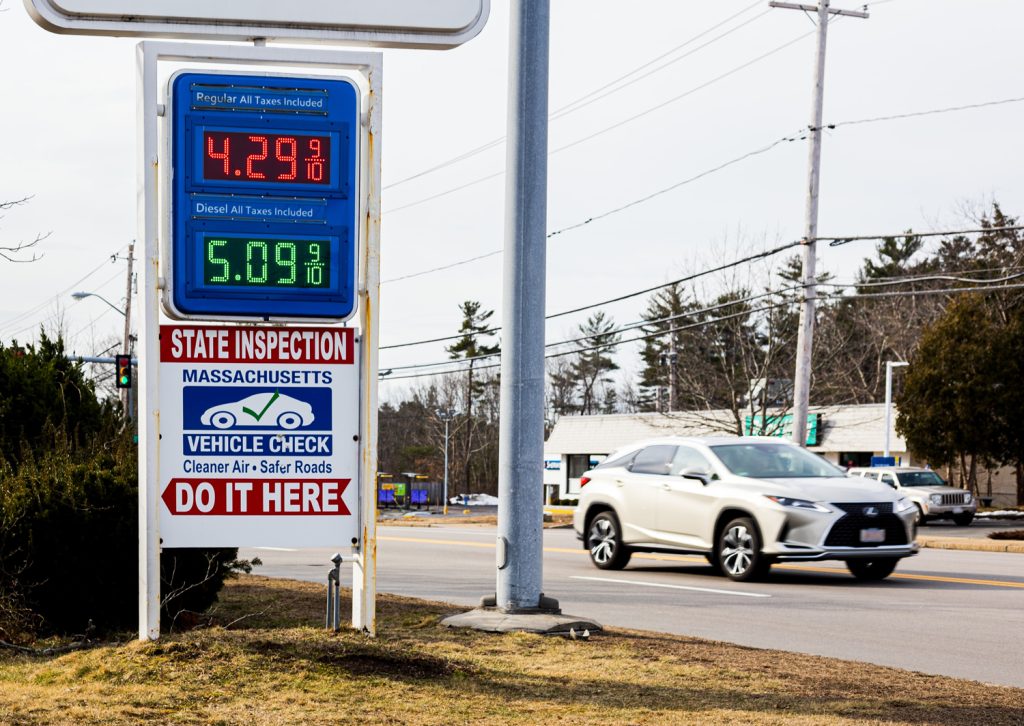By Lori Lee
NDG Contributor
Who is really to blame for inflation? Republicans blame Biden. Biden blames Putin, and economists aren’t sure whether to blame constricted supply or excessive demand. Some accuse the American Rescue Plan for our dilemma. Many are playing the blame game when it comes to inflation. Who should we trust?
Truthfully, the current imbalance cannot be explained so simplistically, and it did not just happen overnight. A series of events have led up to this, beginning in the Spring of 2020, when businesses were closing their doors, and people were living in fear. The economy was in crisis. Government stimulus efforts, beginning in 2020, kept many afloat, but since a majority of our products came from China, reduced production and shipping bottlenecks led created drastic shortages, as demand pushed against constrained supplies.
Without the American Rescue Plan, Moody’s Analytics predicts the American economy would have approached double-digit inflation. Some Americans most certainly would not have survived with it.

Countries in other parts of the world, like Germany, Britain, and Japan, are experiencing similar spikes in inflation post pandemic. Bloomberg reports, a huge factor is the cost of gasoline, noting when gas prices go up, everything that involves shipping costs more. Recent spikes in crude oil are partially attributable to the war in Ukraine, they explain, after much of the world cut off oil purchases from Russia–a major supplier of oil to European nations.
Despite that gas and shipping costs are cooling off, corporations would like the public to believe that spiraling inflation is due to conditions beyond their control. Corporations have been extremely profitable, however, recently hitting a 70-year high and far surpassing elevated input costs like shipping, explains Dr. Rakim Nagood, Chief Economist and Managing Director of Policy and Research for the Ground Work Collaborative. Any added costs are being passed on to consumers. In fact, the Roosevelt Institute reports corporations are recently charging 72% over input costs compared to just 52% pre-pandemic.
The ability of corporations to keep prices high depends upon their market share, explains Nagood. In a market economy, where competition is limited, those with a large market share can maintain high prices as long as Americans continue to pay them. On the other hand, small businesses typically don’t have the luxury of price setting but more often must swallow increasing input costs.
Sadly, less than 8% of current inflation is attributable to rising labor costs, explains the Economic Policy Institute. This hits lower income groups the hardest, especially those who lack transportation options amidst rising gas prices. Chad Stone, Chief economist at the Center for Budget and Policy Priorities reports, “[w]ages are not driving inflation and workers at the bottom of the pay scale have not benefited from the job growth.”
How to reign in an imbalanced market is unclear. Dallasnews.com reports that the President recently called on gas companies to lower prices, while pointing out how out of sync their prices are in relation to their costs. He also called out the meatpacking industry for price gouging. Yet, there is only so much power in the bully pulpit in a market motivated by profits.
The Fed continues to raise interest rates, encouraged doing so will stop wage growth and dampen inflation, essentially freezing the economy until prices settle, analysts note. Yet textbook solutions have proved irrelevant post pandemic. Explains Gerome Powell, the Fed perhaps waited too long to raise interest rates because recent supply shocks did not resolve post-pandemic, as they have historically.
Inevitably, raising interest rates will hurt the ability of those of lower incomes. Further, it will prove effective only if our economic problems lie less in supply shortages than in excess supplies of money. Such money could be saved awaiting a drop in interest rates, which some analysts project in 2023.
There is some good news based on data from the National Bureau of Economic Research (NBER) Business Cycle Dating Committee. Based on the committee’s definition of recession as “a significant decline in economic activity that is spread across the economy and that lasts more than a few months,” the committee reports growth in both real income and production. That is, considering employment, real personal income (minus government transfers), real consumer spending, and industrial production data, and despite inflation, production and real spending have continued to grow during the period beginning with the pandemic and through the first half of this year.




